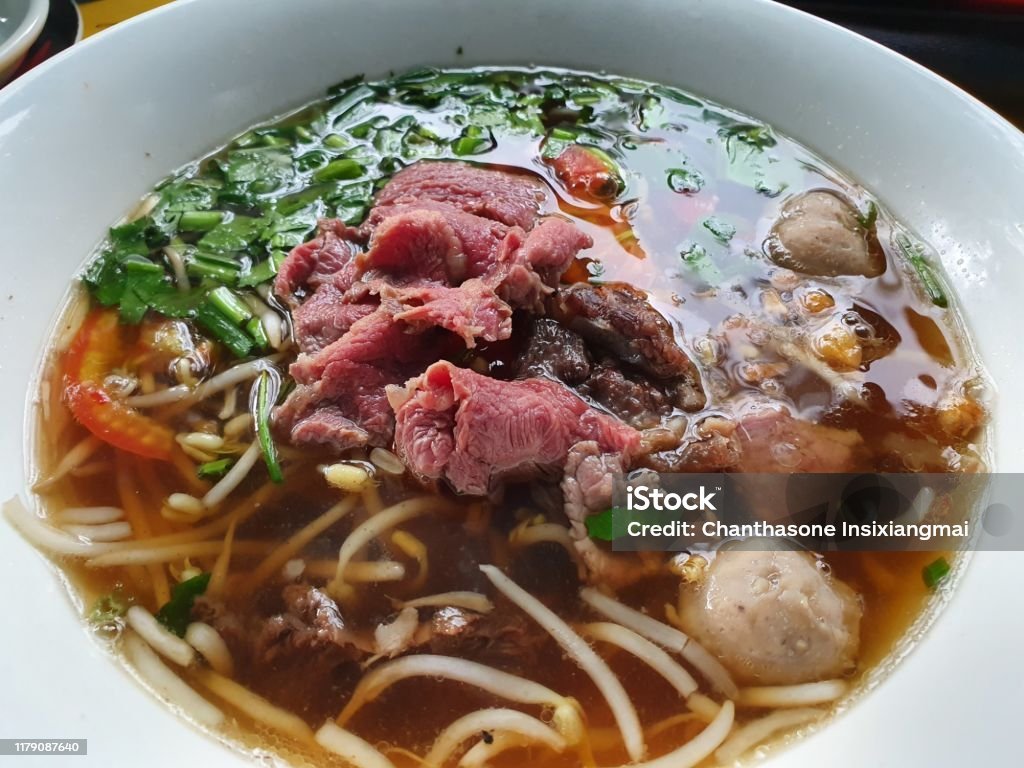
Hoi An is not only famous for its ancient streets but also a unique culinary paradise, in which Cao Lau is a dish with a strong local identity. With its distinctive flavor and elaborate preparation, Cao Lau has become an indispensable symbol when mentioning Hoi An.

Unique Origin
Cao Lau is not only a dish, but also a story of cultural exchange. This dish is influenced by Japanese Udon noodles and the use of Chinese spices, but still retains the unique characteristics of Quang Nam. The name “Cao Lau”comes from the meaning of “Ngồi ăn ở lầu cao (sitting and eating on a high floor)” – showing the luxury and sophistication in the way of enjoying ancient cuisine.
Special Recipe
Cao Lau is characterized by its unique preparation:
Noodles: Made from delicious rice, soaked in water from the cajuput tree ash in Cu Lao Cham, creating a chewy, crispy texture and golden color.
Char siu meat: Pork marinated with rich spices, grilled until golden brown.
Broth: Use only a little concentrated sauce, not too much.
Vegetables: Mustard greens, bean sprouts, herbs from Tra Que village, ensuring freshness.

Unforgettable Taste
When enjoyed, Cao Lau delivers a delightful harmony of flavors and textures that leave a lasting impression. The noodles, thick and chewy with a unique golden hue, are the heart of the dish, offering a satisfying bite that sets them apart from any other. These are paired with tender slices of char siu pork, marinated and slow-cooked to perfection, providing a subtle sweetness that balances the dish.
The rich sauce, infused with aromatic spices and a hint of smokiness, ties all the elements together, creating a depth of flavor that is both comforting and exciting. Complementing this is a bed of fresh, crisp vegetables and herbs, often handpicked from the fertile fields of Tra Que Village, adding a burst of freshness to each bite. A sprinkling of crispy fried noodles or pork rind on top adds a final layer of texture, completing the dish.
Cao Lau offers a special taste experience that is both novel and nostalgic, evoking the timeless charm of Hoi An while surprising your palate with its distinctive character. It’s a dish that stands in a league of its own, impossible to replicate elsewhere.
The Popularity of Cao Lau
Nowadays, Cao Lau has gained popularity and can be found in many places outside of Hoi An. Despite its widespread presence, the dish’s authentic flavor remains deeply rooted in the land of its origin. Only in Hoi An can you truly experience the unique taste crafted from its signature local ingredients.
The noodles, with their distinct chewy texture, are made using ash water derived from specific trees on Cham Island, combined with water from the ancient Ba Le well. The broth, rich and savory, draws its flavor from a blend of local spices and techniques passed down through generations. Even the accompanying herbs are carefully selected from Tra Que Village, ensuring an unparalleled freshness and aroma.
While modern interpretations of Cao Lau may be delicious, there’s a certain magic in enjoying it in the very town where it was born—a magic that captures the essence of Hoi An’s culture and traditions in every bite.

Conclusion
Cao Lau is more than just a dish; it represents the heart and soul of Hoi An’s culinary heritage. This iconic specialty, with its harmonious blend of flavors and textures, reflects the town’s centuries-old culture and history. A bowl of Cao Lau captures the essence of Hoi An with its chewy noodles, savory slices of pork, fresh herbs, and the subtle fragrance of its unique broth—made with water drawn from the ancient Ba Le well.
When you wander through the lantern-lit streets of this ancient town, don’t miss the chance to enjoy a bowl of Cao Lau. It’s not just a meal but an unforgettable experience that connects you to the spirit of Hoi An, its people, and its timeless traditions.





